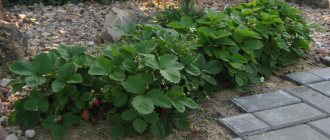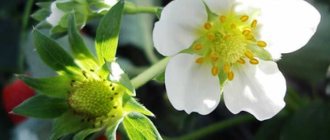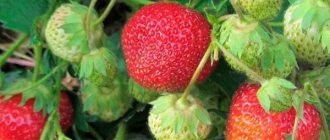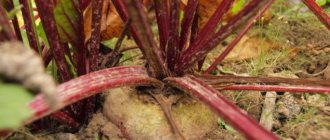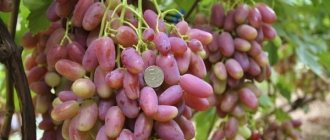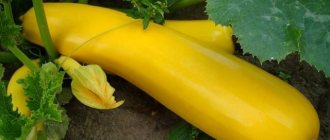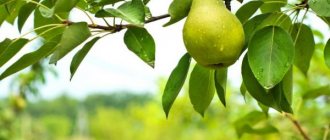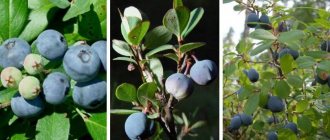Alexandria is a beardless variety of remontant strawberry. It is highly resistant and can produce a stable harvest even with minimal care. Prefers loose and dry areas, but also bears fruit in conditions of high humidity. The bush blooms continuously throughout the season; the berries can be harvested as they ripen. The absence of tendrils simplifies the pruning process; this variety of garden strawberry is suitable for growing under cover made of agrofibre or film. Recommended for beginning gardeners and for planting as a container crop.
History of the development of strawberries Alexandria
Strawberry Alexandria is a variety of American selection, bred by the agricultural company Park Seed Company. The seeds were first introduced to the world market in 1964.
The work was based on the principle of cross-pollination; classic varieties of remontant garden strawberries were used as mother specimens. There is no data on mother plants. In Russia, seeds are distributed by Aelita and Gavrish companies. You can find out about other varieties of remontant strawberries here.
Park Seed has been developing and distributing planting materials since 1868. During this time, more than 1,100 varieties and hybrids of garden and ornamental plants were bred.
How to care for strawberries?
Care after planting depends on the presence of mulch. If it is not there, the soil between the bushes and in the row is often loosened. This helps to saturate the soil with air. Remove weeds that can choke young plants. If seeds do not appear on them, they can be placed between rows as mulch. The mulched area is not loosened. Water more often at first, at least twice a week. When young leaves begin to grow, reduce the frequency of watering.
In plants planted in May, flower stalks with the first buds begin to appear a month later. Gardeners advise plucking them to allow the strawberries to grow stronger. The following flowers are left to taste the taste of the berries. Bushes sown in open ground in spring usually bloom the following year. Preparing for winter doesn't require much effort. Old leaves are trimmed, young plantings are covered with fallen leaves of trees (linden, maple). After 3 or 4 years, the bushes are replanted. They dig them out of the ground, divide them into parts so that each of them has buds and roots. Planted in the same way as young plants.
After a few years, you can try collecting seeds at home. Reviews from gardeners claim that this is easy to do. It is enough to collect a handful of berries, put them in a bowl and chop them. Then add water and stir thoroughly. Let it sit. The remaining pulp floats to the top, and the seeds sink to the bottom. The water and pulp are poured out and the seeds are dried. They need to be sown no later than next spring. Reviews from gardeners claim that Alexandria strawberries often reproduce by self-sowing. Young bushes are planted in a new area.
Description and characteristics of the remontant variety
According to the description, the Alexandria variety forms a powerful semi-spreading bush with dense foliage. The average height is 25 cm. The leaf blades are serrated and have a pronounced central vein. The peduncles are tall, the buds are of a white shade typical for the culture. The mustache does not form. Conical berries weigh up to 8 g; this is one of the largest varieties of remontant strawberries in the alpine group. The fruits have a universal purpose: suitable for fresh consumption and preparation.
The taste is sweet with a slight sourness. Productivity – 4-5 kg per bush, active fruiting is possible up to 4 years of growth. It can produce a harvest from the beginning of summer until the first return frost. The bush is unpretentious to external conditions; the berries can ripen even on a windowsill. There is immunity to fungal diseases typical for the culture, frost resistance is moderate.
Garden strawberry "Alexandrina"
The variety was created at the Siberian Horticulture Research Institute named after. Lisavenko back in the 90s. In 2009, Alexandrina strawberries were included in the State Register with permission for the West Siberian region. The originator is the same research institute/
An important stage in laying out a lawn: preparing the area and soil for sowing grass
Characteristics
| Type: | non-repairable |
| Purpose: | universal |
| Ripening period: | mid-late |
| Fruit weight: | first collection – 20 g, subsequent – 10 g |
| Productivity: | 0.8…1.2 kg/m2 |
| Taste: | good |
| Disease resistance: | No |
Description
Strawberry "Alexandrina" forms tall, semi-spreading, densely leafy plants. The leaves are large, rich green in color, with clearly visible veins and a medium-wrinkled surface. Many leaves are bent along the central vein, and this is clearly visible. The teeth of the leaves are wide, slightly convex. The middle leaf has a rounded shape. The leaf petiole is medium-sized, slightly pubescent, the hairs are pressed to the petiole.
The inflorescences of “Alexandrina” are semi-spreading, with an average of 6.5 flowers per inflorescence. The flowers are medium-sized, untwisted, with white petals.
The berries are round in shape, without a neck. Fully ripe berries are dark red in color, overripe ones are cherry. The weight of the fruits of the first harvest is up to 20 grams, the second and third – up to 10 grams. The taste of the fruit is sweet and sour, good, the tasting score is above 4.0 points, but the register does not say how much higher. Berries contain:
- sugar – 7.4%;
- acids – 0.8%;
- vitamin C – 65 mg/%.
The berries are suitable for fresh consumption, freezing and cooking.
Planting and care
The strawberry variety “Alexandrina” is zoned for only one region of Russia – West Siberian. It is distinguished by relatively high frost resistance, but in other characteristics it is inferior to most modern varieties.
Since the plants are relatively tall and spreading, the strawberry planting pattern should be quite sparse. It would be reasonable to plant plants according to a pattern of 90...100 x 15...20 cm, and subsequently form a second row from the tendrils. In this case, there will be enough space for the plants, and the row spacing will allow you to work in the plantings with relative comfort.
The variety is medium late, and this is a big plus, because late flowering reduces the risk of crop loss due to frost. But there is nothing to reduce: according to the results of variety testing, it is already 0.8...1.2 kg/m2, which is quite modest. Of course, experienced gardeners will be able to get significantly more, but in general “Alexandrina” is not a record holder.
The variety is moderately resistant to drought and disease.
Advantages
- suitability for cultivation in regions with cold winters;
- resistance to freezing;
- tall peduncles;
Flaws
- modest yield;
- insufficiently high disease resistance;
- average drought resistance;
- good but not great taste.
In general, “Alexandrina” is a good variety for regions with cold climates, but that’s all. In the middle zone you can grow much more productive varieties and hybrids.
Reviews
There are no reviews at all about the Alexandrina strawberries.
Growing from seeds
You can purchase planting material of the Alexandria variety in the form of seeds or already grown seedlings. Experienced gardeners prefer to plant bushes themselves. This allows you to get a strong plant adapted to the climate in the region. Each gardener chooses his own methods for growing strawberries from seeds at home.
Pre-sowing preparation
You can get the seeds yourself. Step-by-step algorithm:
- Choose several healthy and ripe berries. Using a sharp knife, cut off the top layer along with the seeds.
- Dry it at a temperature of 25-30 oC for 10-15 days, then rub it with your hands. Dry seeds should spill out.
- They can be stored in an airtight container in a dark place for up to 2 years. To increase germination, it is recommended to use it immediately for sowing.
It is recommended to prepare seeds for sowing for seedlings starting in the second half of January. To do this, place it on a dampened napkin or rag, roll it up and put it in the refrigerator for 14 days. After this, rinse with warm water. The skin should become softer and microcracks will appear.
The process of thermal preparation of seeds is called stratification. It is carried out to increase the germination rate and quality of seed material.
Technology of planting seedlings
The soil for strawberries should be loose and nutritious. You can use ready-made commercial substrates or prepare them yourself. The optimal composition is garden soil, humus, peat and sand in a ratio of 2:1:1:1. After thorough mixing, the soil must be treated with a 1% solution of potassium permanganate. You can learn more about how to plant strawberries with seeds for seedlings in this article.
Technology for sowing strawberries in a common container:
- Place a drainage layer (perlite, expanded clay or pebbles) at the bottom of the container in a layer of up to 7 cm. Fill with nutritious soil.
- Mix the seeds with fine river sand in equal proportions and spread the mixture on the surface.
- Pour plenty of warm water or put snow on top. Cover with glass (transparent film). Place in a dry place with a temperature in the range of 20-25 oC.
The first shoots appear after 14-21 days, depending on the quality of the seeds. After this, remove the cover and lower the temperature by 5-7 °C. Throughout the entire period of seedling formation, moderate soil moisture should be maintained by spraying with water using a spray bottle.
For the active development of seedlings, it is important to maintain diffuse lighting for up to 12 hours a day. Picking into separate containers (plastic or peat pots) is carried out when 2-3 strong leaves appear on the plants. Immediately after transplantation, you need to apply liquid complex root feeding.
In northern regions, it is recommended to harden seedlings on a balcony, terrace or open air. The procedure is carried out after picking the seedlings into separate containers, increasing the time from 5 minutes to several hours.
Transplantation into open ground
The area for growing Alexandria strawberries should be well lit and protected from strong winds. The planting site is prepared at the end of last season. To do this, you need to dig up the soil to the depth of a spade bayonet, add mullein or humus at the rate of 5 kg/m2. Picking to a permanent place is carried out when the seedlings have become stronger and at least 5 leaves have been formed. Open ground planting technology:
- Dig individual holes up to 25 cm deep. Place a drainage layer 5 cm thick at the bottom, as well as 200 g of wood ash.
- The recommended planting pattern for bare strawberries is two-line. The minimum width of the bed is 160 cm.
Plants are planted every 20-40 cm, the distance between lines is 25-40 cm, in rows - 60-80 cm. - Transfer the seedlings into the hole along with a lump of earth. Compact the surface layer of the substrate and pour plenty of warm water.
Immediately after planting, you need to mulch the soil with sawdust or straw in a layer of up to 5 cm. If there is a threat of return frosts at night, the seedlings are covered with non-woven material or plastic bottles with the bottom cut off. Read in more detail how to plant correctly for growing in open ground.
Planting seedlings in the ground
Most often, strawberries are grown in long beds 110 cm wide. It is better if this is a plot after the bulbous ones. You can't plant strawberries after strawberries. The soil there is contaminated with pests (chafer larvae, nematodes). They return to their original site after 4 years.
How to plant seedlings correctly:
- Place the seedlings in 2 rows. Prepare holes with a depth and diameter of 25 cm. The distance between plants in a row is 30 cm, between rows is 50 cm. Water the holes with water and plant seedlings in them.
- If the root system is open, level the roots in different directions. The apical point of growth should be slightly above the soil level. If you sprinkle it with soil, the plant will not develop.
- Compact the soil around the bush and immediately mulch the tree trunk circle. Straw works well for mature bushes. After all, the very name of strawberry means “straw berry.” But such mulch is not suitable for tender young leaves. Therefore, you can use peat or rotted sawdust.
Mulching with lutrasil and other non-woven materials has become popular. At the same time, holes are cut in the canvas and young bushes are planted in them. The edges of the film are fixed with special clothespins, protecting them from gusts of wind. Organic mulch protects the soil well from overheating, but it soon decomposes and needs to be replenished. Inorganic is more durable, but its use requires considerable effort. It does not improve the soil composition.
Features of care
If the agricultural technology for growing seedlings is followed, the plants are formed strong and hardy. Alexandria is undemanding to care; to get a harvest, it is enough to perform a number of simple manipulations - working with the soil, systemic watering and fertilizing.
Mulching
A layer of mulch is necessary to retain heat and moisture on the surface layer of the substrate. The procedure is carried out throughout the season, the minimum thickness in summer is 5-7 cm, if the plants are left for the winter, then the cover should be at least 10 cm. When growing bushes in an area of more than 5 m2, it is advisable to use agrofibre, dark and dense polyethylene film. Find out how to plant strawberries under black agrofibre in the spring by following the link.
For small planting areas, organic mulching is used, for example: peat, sawdust or straw.
Soil care
Before you start mulching, the beds should be loosened regularly. This helps to increase the looseness of the substrate, increasing its aeration and water permeability. The procedure is carried out after each watering, the optimal depth is 5 cm. After fruit set begins, loosening is not carried out. It is also important to remove all weeds in the bed itself, in the area between the rows.
It is recommended to plant onions, garlic or umbrella crops next to strawberries. They secrete phytoncides that repel harmful insects.
Watering
After transplanting strawberry bushes into open ground, watering is carried out up to 2 times a week.
For every 10 bushes you need 10-12 liters of soft and pre-settled water, heated to a temperature of 18-22 oC. Weather conditions and soil moisture should be taken into account; watering should be organized in such a way as to prevent stagnation of moisture and drying out of the soil.
Top dressing
Strawberries need regular feeding throughout the growing season. Main stages:
- for the first time, fertilizers are applied at the seedling stage - liquid complex formulations are used;
- the second procedure is carried out 10-14 days after transplanting the bushes into open ground. Nitrogen-containing compounds are suitable for this, for example, urea or ammonium nitrate at a rate of 20 g/m2. At this stage, you can also use organic matter - an aqueous solution of mullein or bird droppings in a ratio of 1:12;
- After the formation of ovaries, plants need phosphorus and potassium. You can add a solution of superphosphate and potassium salt.
It is recommended to apply fertilizers after the next watering. There is no doubt about the benefits of feeding with yeast. When using dry compounds, work is carried out only in dry and windless weather.
Disease and pest control
The Alexandria variety is immune to fungal diseases of strawberries. Infection occurs when grown in excessively moist soil or when care rules are not followed. If signs of disease are detected (decrease in growth rate, change in color and wilting of leaves, appearance of spots), a comprehensive treatment with a copper-containing fungicide should be carried out. Use Bordeaux mixture, Hom, Oxychom or 1% solution of copper sulfate.
Even the best varieties of remontant are susceptible to diseases and pest attacks. Among pests, slugs pose the greatest danger, since the variety forms a low-growing bush. The population can be reduced mechanically - remove large individuals by hand, treat the soil with boiling water. In case of severe damage, it is advisable to use chemical molluscicides.
If a plant is infected with the mottling or wrinkling virus, it will be difficult to save it. There is no effective treatment; the bush dies within the season.
Diseases and pests
Strawberries are attacked by several types of insects, the most dangerous are:
strawberry mite It settles on the leaves of the plant, the females of this beetle lay eggs on barely blossoming foliage, while simultaneously sucking the juice from the plant. If such an insect is not eliminated in time, it will quickly take over the entire bush and lead to its death;
Disinfecting strawberries before planting, as well as treating already planted bushes with Neoron and Karbofos will help get rid of the pest.
- strawberry nematode. These small worms, only 1 mm long, make the plant fragile and brittle, and the leaves curl on it. When attacked by these worms, a plant cannot bear fruit; it is dug up and burned;
- spider mite He entwines the strawberry bushes with cobwebs, and they begin to turn yellow and dry out. “Karbofos” helps with it, spraying with it is carried out after collecting all the berries;
- wasps. These insects love to feast on sweet strawberry fruits; to protect the bushes from them, you need to set traps for them in the form of several containers with sweet contents.
- ants. They harm both the fruit and the plant itself. Moreover, ants are carriers of aphids. Read more about how to remove ants from your property here.
Common strawberry diseases include:
- late blight wilt. Its first signs are the fallen leaves of the plant, which previously changed their color to brown. To prevent its occurrence, strawberries should not be planted in one place for more than 4 years;
- powdery mildew. It affects the above-ground parts of strawberries, its leaves become purple and curl, and the fruits become unrecognizable in shape. Before and after flowering, spray with a soap solution with the addition of copper sulfate, which effectively eliminates powdery plaque.
Growing in pots
Beardless garden strawberries are suitable for growing as a container plant. It can be kept on the balcony, in an apartment or in open ground. To plant, you need to take a container with a diameter of 12-20 cm, which can accommodate 2-3 bushes. The pot should have holes for draining water, as well as a drainage layer.
The main difficulty with this method is pollination. The process is carried out artificially using a cotton swab or a soft brush. Strawberries in a pot produce a harvest from early summer to mid-autumn.
Landing
Planting dates for Alexandria are standard for remontant varieties. It is best to plant in the spring, as soon as the seedlings sown in containers in February-March have grown. The location is chosen in partial shade; the variety does not like direct sunlight. However, you shouldn’t plant it completely in the shade; if there is a lack of light, the berries will not pick up enough sugar. It has been noticed that the aroma of strawberries grown in the sun is brighter than those from bushes that grew in the shade. The soil must be enriched with a bucket of humus mixed with a glass of ash (per 1 m2).
It is optimal to make a strawberry bed in two lines, leaving an interval of 25-30 cm between the bushes, 0.5 m between the tapes. The holes must be immediately shed with water to shrink the soil. It is advisable to carefully cut off the first burst of flower stalks so that the seedlings spend energy only on rooting.
If you plan to grow Alexandria on the balcony, you will need containers of at least 12 cm in diameter. Be sure to arrange a drainage layer of about 3-4 cm made of expanded clay. It is necessary to provide a tray to drain excess water. Flowering strawberries are pollinated by hand with a brush.
Cultivation time for Alexandria in one place: 3-4 years.
In many characteristics, Alexandria strawberries are similar to another popular variety - Baron Solemacher
Reproduction methods
Alexandria bushes do not form tendrils, so propagation is possible only with the help of seeds or by dividing the bush. In practice, the second method is used, since it allows you to obtain a healthy plant without loss of varietal qualities.
The optimal time for the procedure is spring or late autumn after harvest. The bush must be dug up and divided into several equal parts with a knife or shovel. All daughters should have 3-4 growth buds. After treating the cut site with charcoal or ash, they can be planted immediately in a permanent place.
conclusions
- Alexandria is a variety of remontant strawberry. Forms a compact and branched bush. The berries have a universal name; from one plant you can collect 4-5 kg of fruit per season.
- Suitable for growing in open ground, greenhouse or as a potted crop. The landing site should be bright and protected from the wind.
- Seeds for seedlings are sown from January-February after preliminary stratification. Transplantation to a permanent place is carried out after the formation of 5 leaves.
- The plant is unpretentious to external conditions and care. To obtain a harvest, you should maintain moderate soil moisture, mulch and fertilize.
How to care for strawberries?
Care after planting depends on the presence of mulch. If it is not there, the soil between the bushes and in the row is often loosened. This helps to saturate the soil with air. Remove weeds that can choke young plants. If seeds do not appear on them, they can be placed between rows as mulch. The mulched area is not loosened. Water more often at first, at least twice a week. When young leaves begin to grow, reduce the frequency of watering.
In plants planted in May, flower stalks with the first buds begin to appear a month later. Gardeners advise plucking them to allow the strawberries to grow stronger. The following flowers are left to taste the taste of the berries. Bushes sown in open ground in spring usually bloom the following year. Preparing for winter doesn't require much effort. Old leaves are trimmed, young plantings are covered with fallen leaves of trees (linden, maple). After 3 or 4 years, the bushes are replanted. They dig them out of the ground, divide them into parts so that each of them has buds and roots. Planted in the same way as young plants.
The main thing is to grow at least a few bushes, from which you can then collect seeds.
After a few years, you can try collecting seeds at home. Reviews from gardeners claim that this is easy to do. It is enough to collect a handful of berries, put them in a bowl and chop them. Then add water and stir thoroughly. Let it sit. The remaining pulp floats to the top, and the seeds sink to the bottom. The water and pulp are poured out and the seeds are dried. They need to be sown no later than next spring. Reviews from gardeners claim that Alexandria strawberries often reproduce by self-sowing. Young bushes are planted in a new area.
More information can be found in the video:
Strawberries Alexandria - very juicy!
https://fermilon.ru/sad-i-ogorod/yagody/zemlyanika-aleksandriya.html
https://megaogorod.com/atricle/2917-zemlyanika-aleksandriya-vyrashchivanie-i-otzyvy-o-sorte

